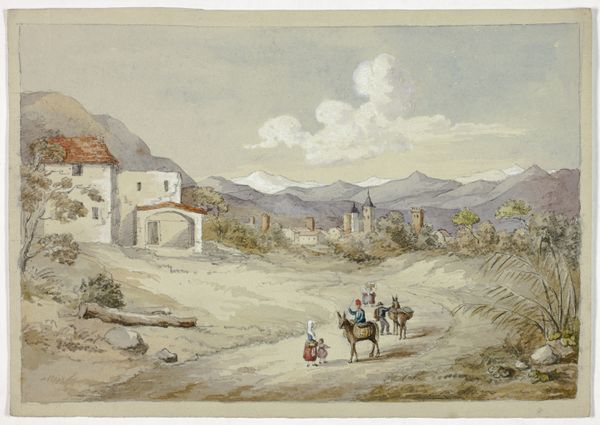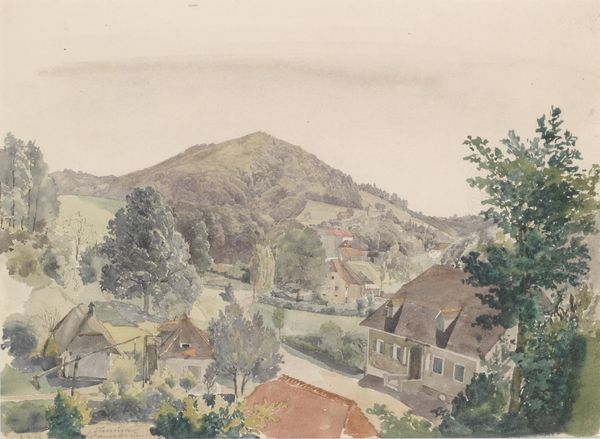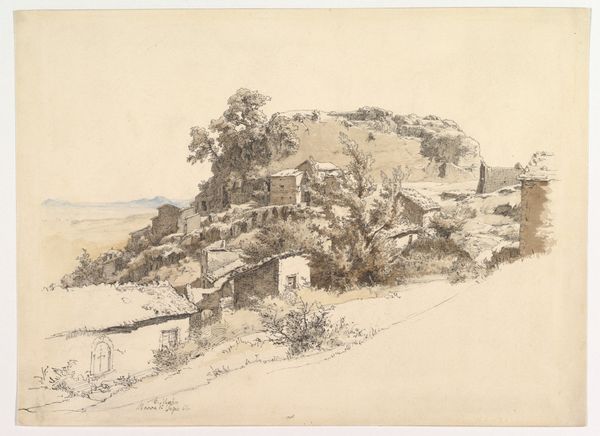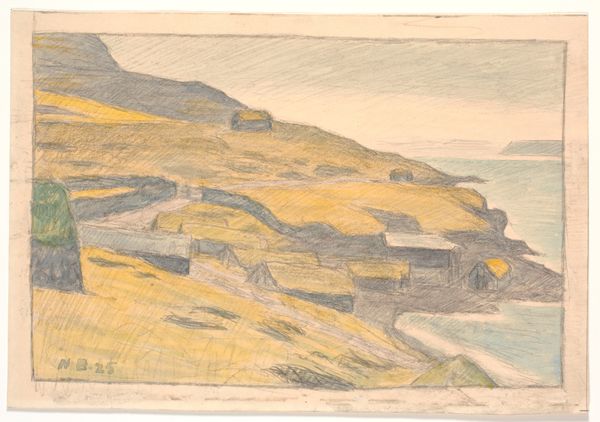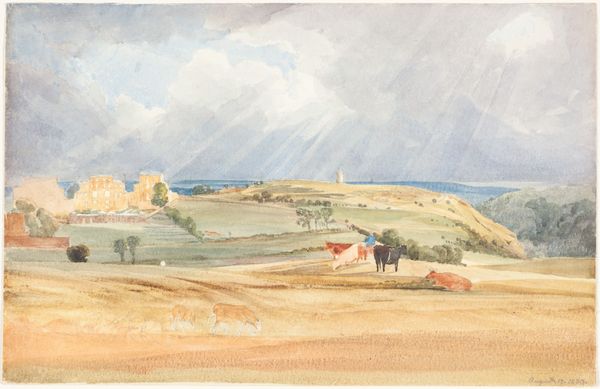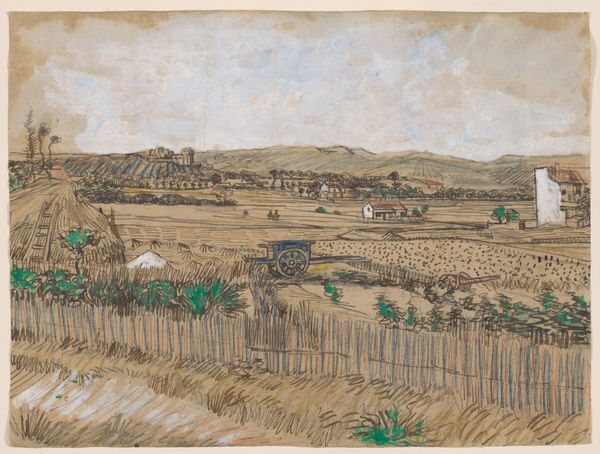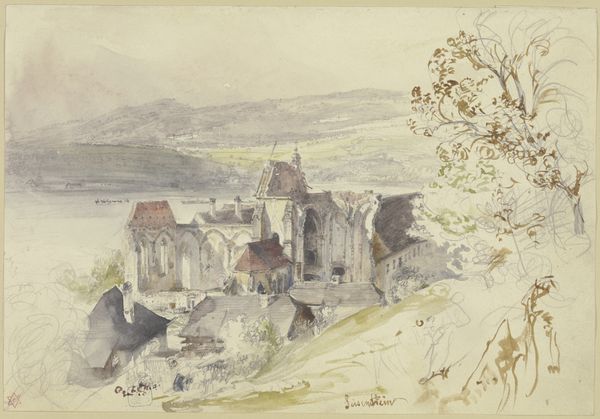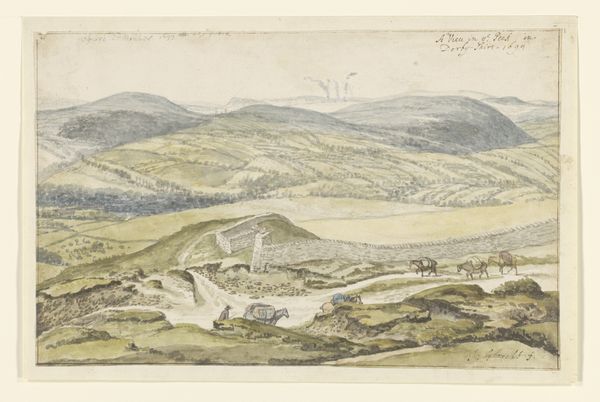
drawing, print, gouache, plein-air, paper, watercolor, graphite
#
drawing
# print
#
gouache
#
plein-air
#
landscape
#
paper
#
watercolor
#
coloured pencil
#
romanticism
#
water
#
graphite
#
cityscape
Dimensions: 176 mm × 254 mm
Copyright: Public Domain
Curator: Upon first glance, this image feels dreamlike, shrouded in soft, diffused light. The scene almost fades into the paper. Editor: That’s an interesting observation. Let me provide some context. This is "Kilkenny Village from the Rocks," a work created around 1843, attributed to Elizabeth Murray. She worked in gouache, watercolor, graphite, and coloured pencil on paper in plein-air. It's a charming cityscape scene. Curator: Charming is right—but there’s also a palpable quietness to the village that resonates. The thatched roofs seem heavy with untold stories, their simple shapes holding the echoes of generations. I can almost feel the cool dampness of the stone. Editor: Murray was certainly capturing a particular kind of Irish identity through these dwellings. These weren't grand estates but rather modest homes likely reflecting the social realities of the time and place. Curator: Precisely! The choice of watercolor is also significant. The way the colours bleed and blend softens the edges of reality. Note also the prominence of rocks; this village is built upon and among this geological feature that gives an uncanny sensation of something permanent and abiding. It feels ancient. Editor: The work is deeply rooted in its moment. Romanticism, which emphasized emotion and the sublimity of nature, deeply influenced landscape artists like Murray. Cityscapes served a powerful function during periods of intense urbanization, creating something beautiful from everyday life. The romantic approach offers the promise of cultural pride during political strife. Curator: It speaks to how art can provide refuge. What stories are we meant to believe, and which realities need more visibility? I imagine for those viewing it back then and now, it evokes very complex emotions. Editor: Absolutely. Art serves as both a reflection of and a response to social currents, often shaping collective memory. Curator: Seeing art this way is useful, and also I realize it encourages dialogue, shifting perspective on symbols as cultural touchstones. Editor: Yes, and understanding these dialogues offers vital insight into the times and societies that created and appreciated them.
Comments
No comments
Be the first to comment and join the conversation on the ultimate creative platform.
